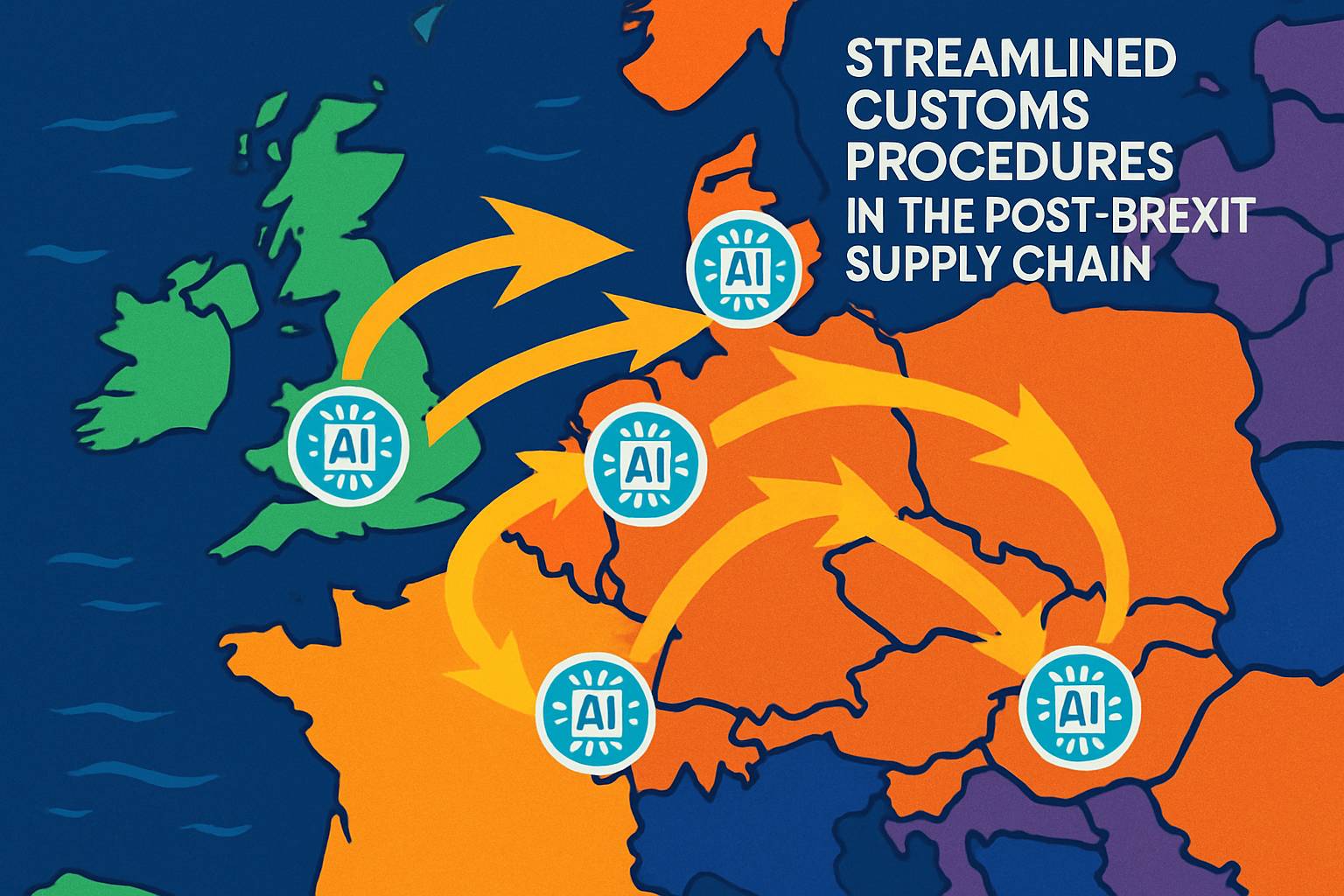
AI CERTS
1 day ago
Metro Shipping AI Customs Boosts Supply Chain Efficiency
Therefore, leadership turned to AI extraction, workflow engines, and human-in-the-loop verification. This article unpacks how the solution works, what numbers prove success, and why it matters. Moreover, we outline broader market forces that keep automation spending elevated despite macroeconomic jitters. Readers will gain clarity on technical patterns, risk considerations, and practical next steps. Each insight aligns with professional concerns about compliance, scalability, and cost control. Ultimately, the story highlights where the modern Supply Chain is heading during a new competitive cycle.
Post-Brexit Customs Workflow Pressures
Brexit amplified declaration volume across the Supply Chain for every UK logistics provider overnight. Metro Shipping faced more than 1,500 weekly import and export transactions after the transition. Furthermore, customers expected sub-two-hour responses even while HMRC migrated from CHIEF to CDS formats.

In contrast, manual keystrokes previously dominated the Customs Clearance workflow. Operators risked errors, overtime costs, and regulatory fines when screening multi-line declarations. Consequently, leadership needed technology that scaled capacity without recruiting dozens of brokers.
WiseTech’s CargoWise and WNS’s Malkom-SKENSE stack offered the required digital muscle. Additionally, Metro built an API to HMRC’s CuDoS gateway to secure uninterrupted submission. These preparatory moves created the foundation for subsequent automation successes.
Rising post-Brexit pressure demanded fast solutions. Next, we examine the architecture chosen to answer that demand.
AI Automation Architecture Explained
The deployed stack follows a layered pattern common in compliance automation. First, ingestion connectors capture PDFs, EDI files, and scanned images from clients. Subsequently, OCR and NLP models extract roughly forty fields per document with confidence scoring.
Malkom handles extraction while SKENSE performs Data Contextualization through tariff lookups and rule engines. Moreover, low-confidence items route to human reviewers who correct anomalies within minutes. This human-in-the-loop safeguard keeps reported accuracy above ninety-nine percent.
CargoWise receives the validated payload and auto-builds declarations inside its customs module. Therefore, brokers can audit exceptions from one dashboard rather than open multiple screens. Automated submission then pushes data into HMRC CDS without further intervention.
Consequently, synchronized datasets flow through the Supply Chain without manual bottlenecks. Layered AI plus rule logic underpins the program’s resilience. However, the real story emerges in the performance metrics we explore next.
Quantified Efficiency Outcomes Achieved
Vendor reports reveal hard evidence of operational gains. Notably, average monthly turnaround time dropped more than forty percent within eighteen months. Consequently, SLA attainment reached ninety-eight percent against a two-hour benchmark.
- Over 10,000 hours saved yearly, equal to seven full-time roles.
- 25% volume growth managed with 20% fewer customs staff.
- Data accuracy maintained above 99% since September 2021.
- Micro turnaround achieved at sub-eight-minute speeds on selected flows.
Metro managers offer illuminating context behind the numbers. Natalie Frost cites automated tariff integration as critical for rapid Customs Clearance. Meanwhile, Sophie Moss attributes the 10,000-hour saving to workflow triggers and template reuse.
The quantifiable gains translate directly into Supply Chain agility and customer satisfaction. Accordingly, investors notice the trend’s wider market implications discussed below.
Broader Market Growth Context
Independent analysts forecast strong expansion for AI logistics platforms. ResearchAndMarkets pegs 2024 global value at roughly twenty-four billion US dollars. Moreover, MarketsandMarkets expects a surge toward fifty billion by 2031.
While that scope spans route planning and warehousing, customs automation forms a visible subsection. Post-Brexit compliance complexities amplify demand across the European theatre. Consequently, rival vendors like Raft, Conex, and iCustoms.ai showcase similar Data Contextualization features. Analysts agree that end-to-end Supply Chain intelligence requires integrated customs components.
Pricing models increasingly shift toward pay-per-use or outcome fees. Therefore, smaller forwarders can pilot automation before committing large capital budgets. Professionals can enhance their expertise with the AI Prompt Engineer™ certification.
Market momentum suggests continued innovation cycles. However, benefits arrive with specific implementation challenges outlined next.
Implementation Lessons And Caveats
Integrating with government endpoints remains the foremost technical burden. HMRC’s CDS timelines evolve, forcing developers to update mapping rules regularly. Moreover, API throttling or schema changes can stall live shipments.
Data quality also impacts Customs Clearance success. Low-resolution shipping documents impair OCR accuracy, increasing human review rates. Nevertheless, champion-challenger model retraining mitigates many recurring errors.
- Vendor lock-in complicates future platform migrations.
- Change management demands structured training for legacy staff.
- Audit transparency matters for regulatory inspections.
WiseTech advocates phased rollouts to spread learning curves across teams. Additionally, WNS publishes Power BI dashboards providing instant insight into exception patterns. These governance actions keep Supply Chain leaders confident during scaling phases.
The caveats underscore preparation and continuous monitoring needs. Subsequently, organizations can pursue forward-looking roadmaps described in our final section.
Future Roadmap For Shippers
Metro plans to extend automation toward origin documentation and duty drawback processing. Furthermore, generative AI experimentation aims to predict duty liabilities before shipment booking. In contrast, some competitors prioritize direct carrier integrations for end-to-end status visibility.
Regardless of approach, Supply Chain orchestration will rely on richer Data Contextualization across sources. Consequently, API standardization initiatives like DCSA may gain broader adoption. Meanwhile, regulators continue tightening digital record expectations, reinforcing the need for auditable workflows.
Shippers evaluating next steps should benchmark internal cycle times against Metro’s published metrics. Therefore, a pilot environment with measurable KPIs offers the safest entry path. Professional upskilling, especially in prompt engineering and data quality management, remains equally critical.
Continued innovation promises material Supply Chain competitive advantages. However, disciplined program management will separate winners from laggards.
Metro Shipping’s journey illustrates how AI can rewire Customs Clearance at impressive scale. Quantified gains include forty percent faster turnarounds and 10,000 annual hours reclaimed. Moreover, Data Contextualization and human oversight maintained near-perfect accuracy. These improvements ripple across the broader Supply Chain, enhancing reliability and customer trust. Nevertheless, integration complexity, governance, and training still demand executive focus. Consequently, firms should pilot layered automation while nurturing specialist skills. Explore the certification link above and take decisive action toward your optimized operations. The post-Brexit trade landscape rewards early movers.



